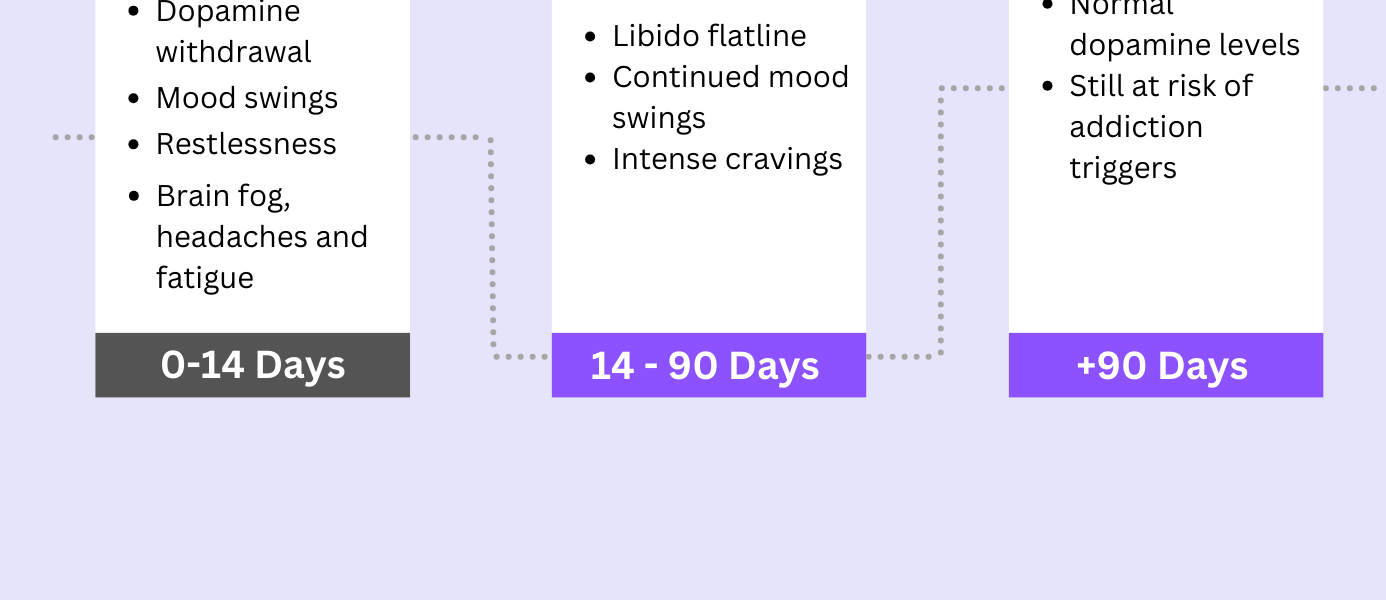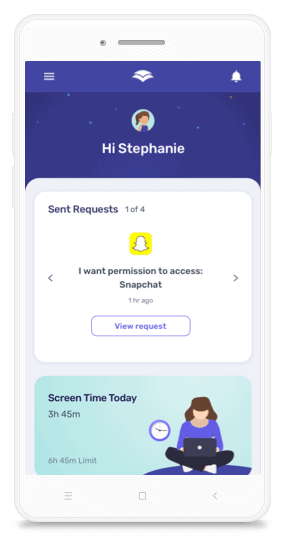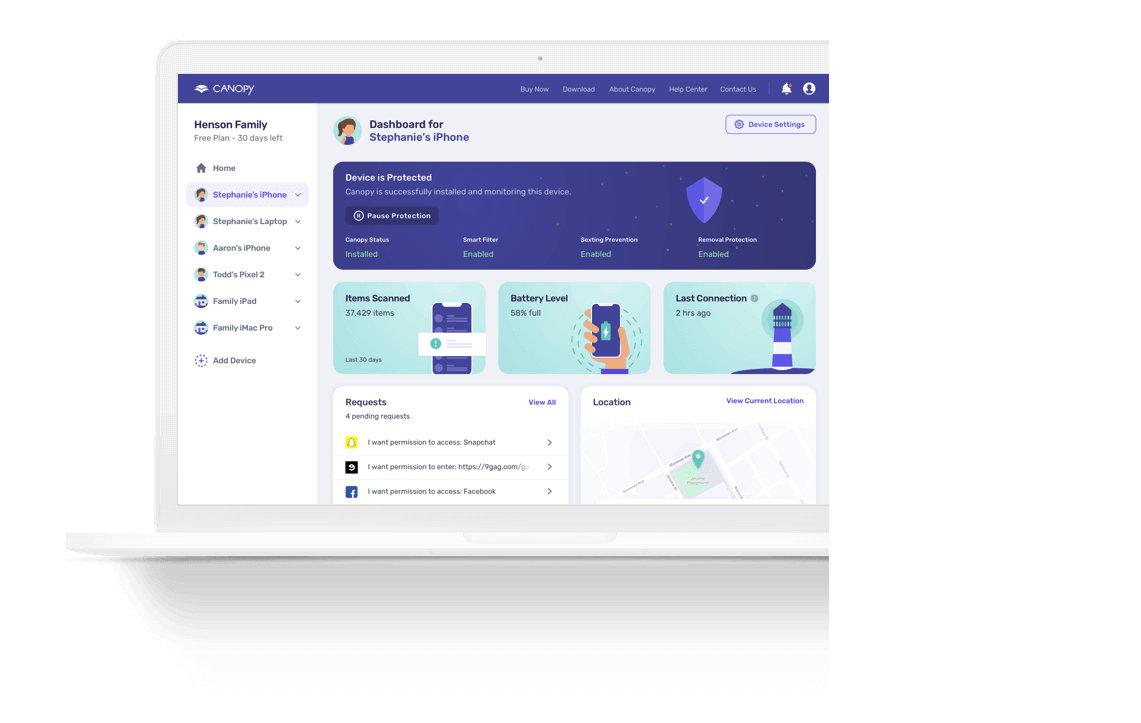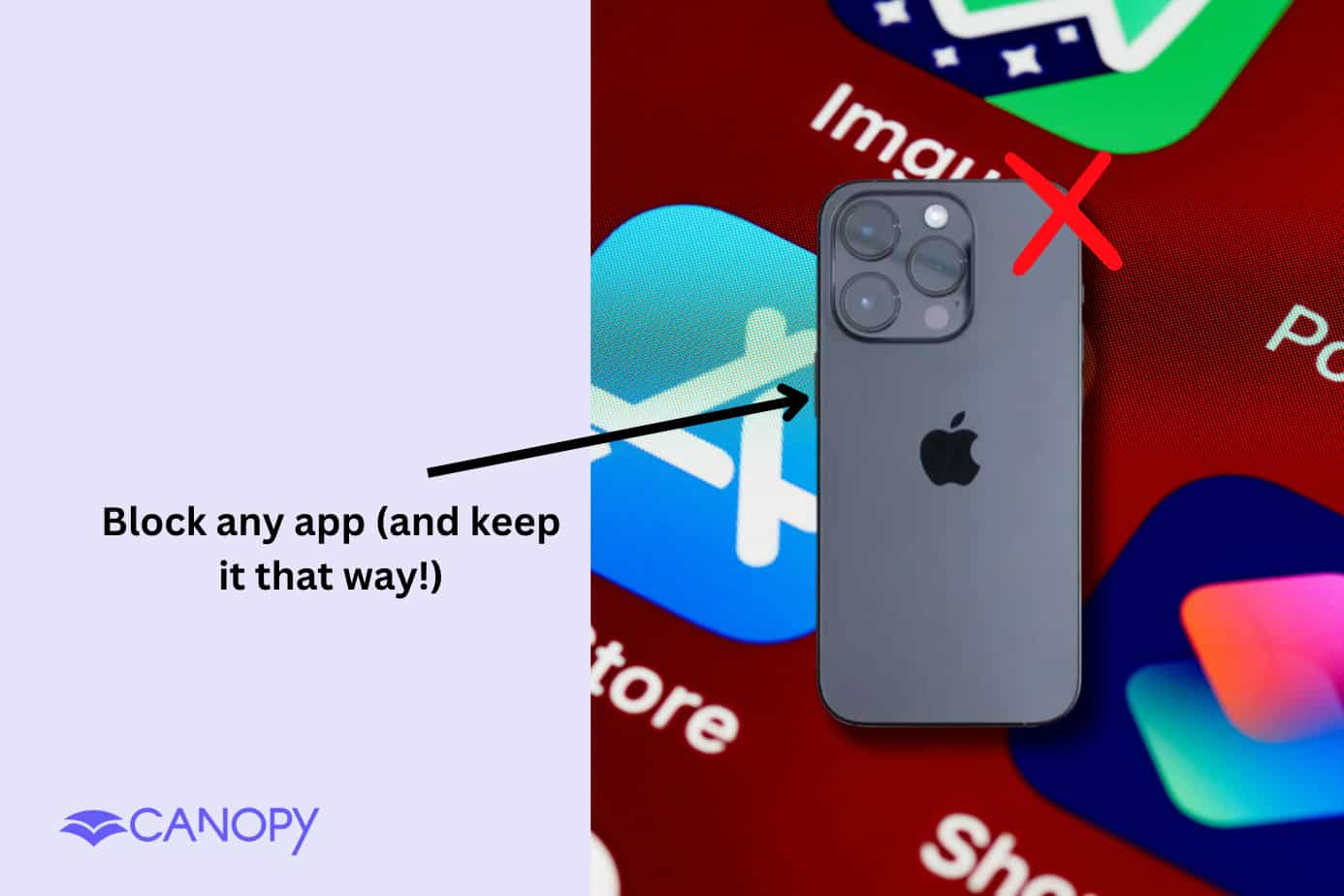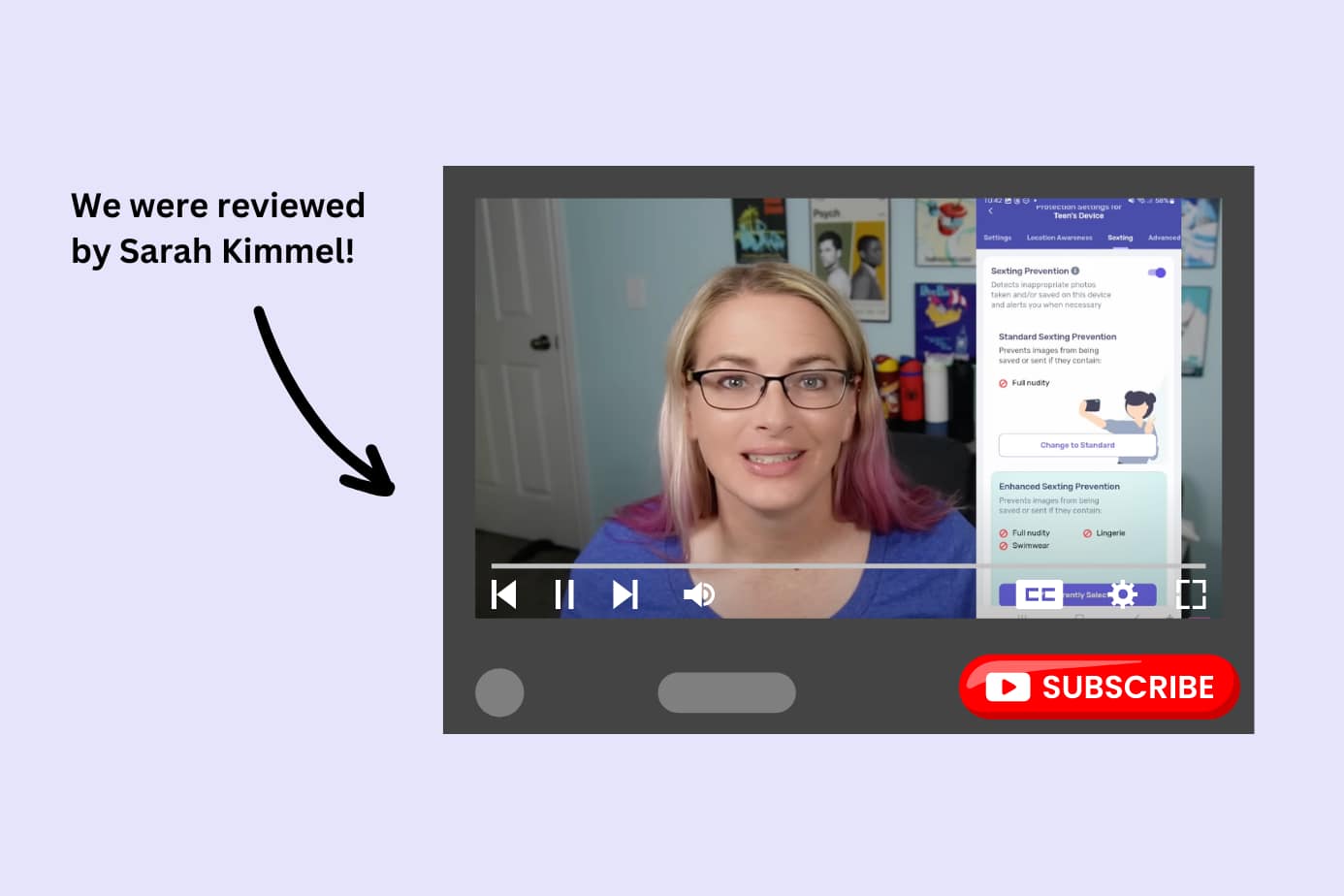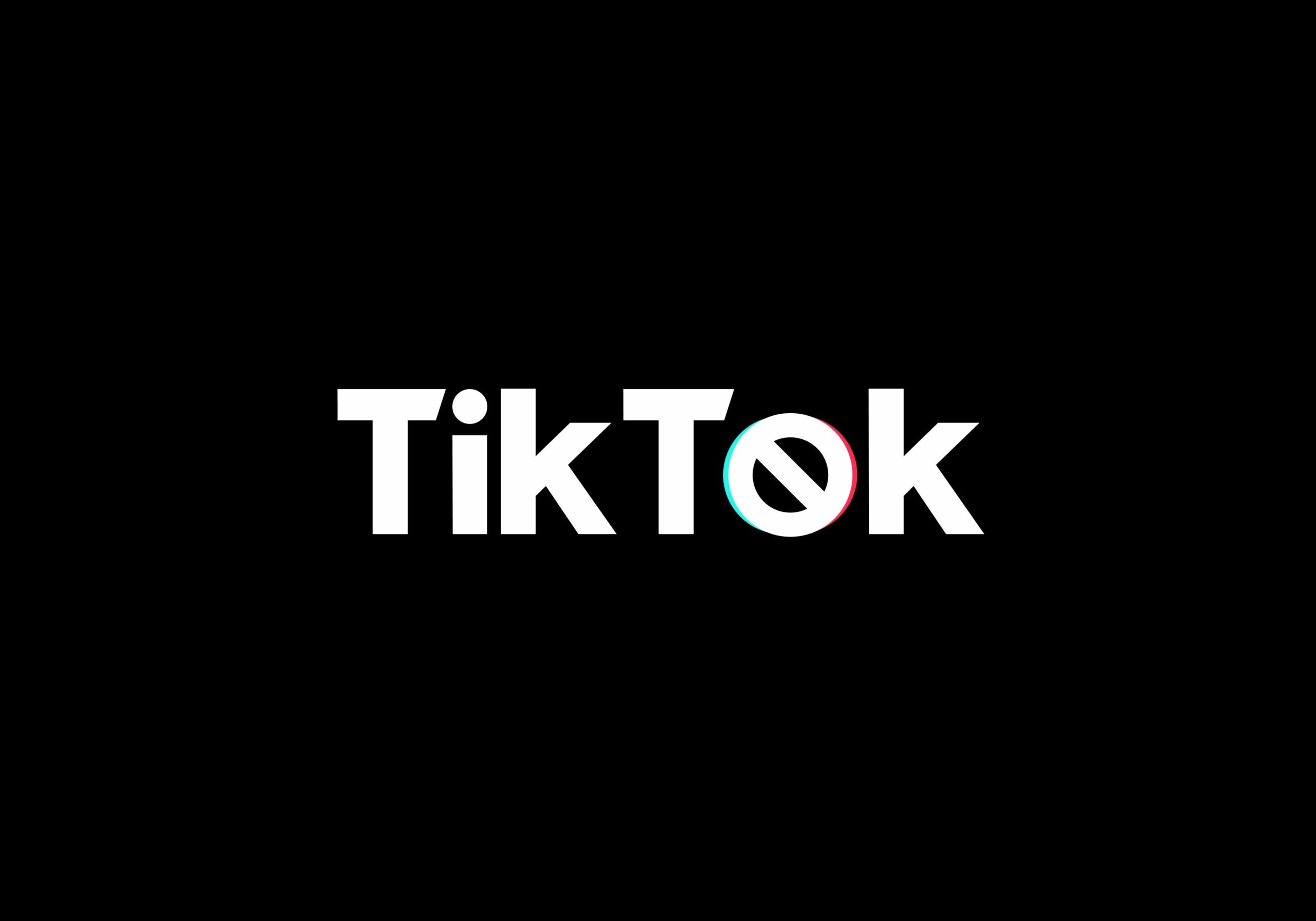Quitting porn is a personal decision, but the outcomes many people report are strikingly similar: more focus and energy, better sleep, steadier mood, healthier sexual function, and stronger relationships. If you’ve wondered what happens when you stop watching porn, think of it as a reset.
Porn trains the brain to expect high novelty on demand, while taking a break allows your reward system to settle. Everyday experiences, conversations, hobbies, work wins, and time with your partner – start to feel satisfying again.
For some, quitting is about repairing trust in a relationship. For others, it’s about productivity, mental health, or aligning behavior with personal values or faith. Whatever your reasons, this change is not about perfection or shame. It’s about building a digital environment that supports who you want to be.
This article covers the full picture: the physical benefits of not watching porn, quitting porn benefits for mental health, a realistic quitting porn timeline, the stages of quitting porn, and how long to quit porn in practical terms. You’ll also find strategies that work in the real world. The goal isn’t to scare you into quitting – it’s to show what improves when you do and how to navigate the bumps along the way.
Physical benefits of not watching porn
Many people notice body-level changes first after using a reliable parental control app to reduce distractions. You won’t necessarily see everything overnight, but across days and weeks, positive patterns often emerge.
More consistent energy
High-novelty content, like unchecked access to social media or video platforms, produces spike-and-crash cycles that can be minimized by using parental control apps for cell phones or learning how to block content on TikTok. Without that constant stimulation – enabled by strategies such as blocking YouTube on computer or using Windows 10 parental controls – energy tends to stabilize. People often report fewer late-night binges, fewer next-day crashes, and more motivation to move. Work blocks feel more manageable, and the “afternoon slump” eases when sleep, movement, and nutrition are steadier.
Better sleep quality
Late-night porn sessions combine bright screens, mental arousal, and stress—three things that push sleep later and make it lighter. When you remove that combo (especially near bedtime), sleep often becomes deeper and more restorative. Better sleep compounds benefits across mood, focus, immune function, and hormones. Many people also notice fewer middle-of-the-night wakeups, less scrolling in bed, and an easier time waking up on schedule.
Improved sexual function and sensitivity (with nuance)
Some heavy users report difficulty becoming aroused with a partner, performance anxiety, or needing very specific cues to respond. Quitting gives your brain and body a chance to re-associate desire with real connection, reduce pressure, and improve responsiveness.
Research on pornography and sexual function is mixed. Some studies find associations between problematic use and erectile difficulties, while others are more skeptical about a direct causal link. What’s consistent is that many people report practical improvements after quitting – often tied to lower anxiety, better sleep, and more attention to a partner.
More room for movement and recovery
Quitting frees up mental bandwidth and time – often an hour or more per day. Many people naturally redirect that time toward walks, workouts, or sports. Physical activity reinforces better sleep and mood and supports healthy hormone regulation. Over months, that shift often leads to feeling stronger, more capable, and more grounded in your body.
Fewer repetitive-strain issues
Compulsive routines can be physically repetitive, especially when screens are always within reach – learning how to block porn on Android or how to block porn on iPhone helps create breaks that ease strain.”. Scaling back or stopping reduces the chance of soreness or strain, while also easing the rumination that keeps loops going. You’re less likely to spend long, static periods in awkward positions with poor posture, which also helps back, neck, and wrist comfort.
Bottom line: the physical benefits of not watching porn tend to compound: steadier energy, better sleep, healthier sexual function for many, and more capacity for routines that support long-term health.
Quitting porn benefits for mental health
The mental and emotional changes are often the most meaningful and motivating.
Less anxiety and shame
A common loop looks like this: urge → use → brief relief → guilt or secrecy → isolation → urge. Removing the trigger from that loop reduces internal friction. As distance grows, self-criticism softens and baseline anxiety lifts. You also gain confidence from keeping promises to yourself, which is a reliable way to rebuild self-respect and optimism.
Brighter mood and motivation
When the reward system isn’t constantly flooded with novelty – often fueled by endless algorithm loops – people may instead explore alternatives to porn that reinvigorate interest in real-life connections. People often rediscover motivation – finishing projects, cooking, reaching out to friends – without needing a constant “hit.” It becomes easier to get started and to keep going. You may find yourself daydreaming less and doing more.
Clearer focus and less brain fog
High-stimulus content fragments attention. As you cut it out, it becomes easier to enter longer blocks of focus and stay there. Meetings and study sessions feel less like white-knuckling and more like a sustainable rhythm. That translates to better performance at work or school—and a calmer, more organized mind afterward.
Healthier body image and expectations
Porn can distort expectations about bodies and intimacy. Stepping back helps recalibrate toward reality: kindness, patience, consent, humor, and presence. Less performance pressure means more room for genuine connection. Realistic expectations also reduce anxious comparison and make communication with a partner feel safer.
Stronger relationships and deeper intimacy
When porn isn’t the default coping strategy, there’s more space for real conversation and emotional honesty. Many couples report less pressure, more attunement, and intimacy that feels grounded —not mediated by screens or platforms like Snapchat or YouTube, especially when how to block videos on YouTube is part of the household wellbeing plan. Trust grows as consistency grows. Partners often say they feel more “seen” and less objectified when screens aren’t in the middle of everything.
Quitting porn timeline
A porn withdrawal timeline isn’t identical for everyone, just like setting up Discord parental controls or blocking websites on Chrome mobile, it’s about finding what works for your situation.. Use this as a guide, not a test. Your path may be faster, slower, or a bit uneven—progress still counts.
Days 1–7: Disruption and cravings
- Your brain notices the missing stimulus, similar to what happens when you block YouTube from Safari or remove a high-stimulation app.. Urges spike, and emotions can feel flat or irritable.
- Sleep may wobble as routines change.
- Small wins matter. Each time you ride out an urge – like resisting the urge to bypass a porn blocker on your phone – you reinforce the message: “I can choose differently.”
- Some people experience a “novelty hangover”: everything feels boring for a few days while your system recalibrates.
What helps this week: remove obvious triggers (tabs/apps/private browsing), add a blocker, set device-free zones, and prepare quick replacements—a walk, a shower, texting a friend, or a two-minute journal. Pre-decide a plan for the riskiest hours of your day, late night, home alone, or post-conflict, just like parents plan how to block apps on iPhone during study hours or bedtime.
Weeks 2–4: Stabilizing and rebalancing
- Urges persist but become more predictable and less overwhelming, especially when you’ve taken steps like learning how to block adult content on Facebook to reduce visual triggers.
- Focus and mood start to brighten, while energy evens out.
- Interest in real connection often returns. Performance anxiety begins to ease.
- You’ll notice which triggers matter most – fatigue, boredom, stress, loneliness, and unstructured time, just like learning to recognize signs when kids are watching porn or misusing devices.
What helps this month: keep structure simple and repeatable – consistent sleep, movement, meals, and a short daily reflection (“What helped today?”). Have 2–3 “go-to” healthy distractions ready. Protect your evenings: dim lights, charge your phone outside the bedroom, and build a wind-down ritual that doesn’t involve a screen.
Months 1–3: Noticeable benefits
- Brain fog lifts. Motivation is easier to access.
- Many report better intimacy and confidence.
- Triggers are easier to spot. Recovery from slips is faster.
- Social time feels more enjoyable. There’s less urge to retreat into a screen.
What helps now: expand support (trusted friend, accountability partner, therapist if needed). Reinvest in hobbies or community, and practice stress skills that fit your values (prayer, mindfulness, breathing drills). Keep replacing “doom-scroll windows” with specific plans: a short walk after dinner, an audiobook while tidying, or ten minutes stretch routine.
Months 3–6: Rewiring and growth
- Urges fade in intensity and frequency.
- You feel more at home in your routines – work, friendships, creativity.
- Values-driven goals (what you’re building) replace purely avoidance goals.
- You start to see yourself as a person who protects their attention, not a person who is “fighting” all the time.
What helps now: strengthen identity-based habits: “I’m the kind of person who…” Keep the blocker and structure- they’re part of your new normal. Consider upgrading your environment further: follow fewer sexualized accounts, curate your feeds, and set app time limits that match your goals.
6+ months: Integration
- The habit no longer drives your day.
- Occasional urges arise with stress or loneliness, but you have tools.
- Many describe a baseline of calm confidence and presence.
- You notice the new gains most in quiet moments: reading at night, being fully present with a partner, finishing things you start.
Reminder: a quitting porn timeline is a map, not a verdict. Keep what works, and adjust what doesn’t. Celebrate steady progress!
Stages of quitting porn
While the timeline says when, these stages describe how it feels inside, similar to how understanding what parental control is helps with the emotional side of change. People move back and forth between them. Remember, a slip doesn’t erase progress!
- Recognition – “This isn’t helping me.” You notice costs – time, mood, intimacy, integrity, especially when reflecting on what porn does to the brain and the impact on connection..
- Decision – You commit to change. You set a start date, clear devices, or tell someone you trust.
- Withdrawal – Urges spike, and emotions are choppy. You practice new responses – just like you would after discovering porn on Spotify or other unexpected platforms.
- Repair – Sleep and mood settle while attention strengthens. You rebuild trust with yourself (and, if relevant, your partner).
- Growth – You invest in relationships, fitness, learning, faith, or creative work – replacing the need for digital novelty like porn on Pinterest. Dopamine now comes from real life.. Dopamine now comes from real life.
- Maintenance – You keep protective systems in place, like using Windows 10 parental controls or structured screen habits.. You prevent rather than react.
How long to quit porn
There isn’t one clock for everyone, but a practical framework helps:
- Acute adjustment (first 2–4 weeks): urges and mood swings peak, then begin easing.
- Functional reset (1–3 months): clearer focus, steadier mood, more control.
- Deep rewiring (3–6+ months): triggers lose their charge. Intimacy and everyday enjoyment grow, just as healthy habits form after learning how to block porn on Twitter or other social platforms..
If you’re asking how long to quit porn until it feels normal, many people report a turning point around weeks 6-8 when routines feel less like effort and more like identity. Habit formation in everyday life often takes weeks to months, with broad individual ranges – that’s normal.
The aim is consistent practice, not perfection. Think in terms of building a lifestyle that makes the right choice easier most of the time.
What happens when you stop watching porn? (Plain-language snapshot)
- Your reward system calms down. Everyday pleasures (food, conversation, music, progress at work) feel richer without constant novelty-seeking.
- You reclaim attention. The mental “tab” that kept calling you back goes quiet. Focus becomes easier to find and keep.
- Desire becomes relational again, free from artificial cues – especially if you’ve dealt with issues like porn addiction in women, which often goes under-discussed.
- You get time back. Minutes become hours you can reinvest in health, relationships, or skills.
- Self-trust returns. Keeping small promises builds momentum that spills into fitness, money, learning, and intimacy.
- Life expands. Boredom becomes a cue to create—unlike using devices impulsively, which is why many wonder is watching porn normal, especially when navigating this shift.
Practical strategies that work (and why)
These align with what we know about habit change and self-regulation.
1) Reduce friction to the right choice
Put a real-time porn blocker on every device, sign out of risky sites, remove private-device setups, and create phone-free zones (bedroom, bathroom, desk). Make the healthy choice the easy choice. Disable “infinite scroll” where possible and turn off autoplay. On social feeds, unfollow accounts that reliably lead to sexualized rabbit holes – especially if you’re figuring out how to block adult content on Instagram or other social apps.
2) Name your triggers
Common triggers: stress, boredom, loneliness, late-night scrolling, certain apps, conflicts, or unstructured time. Identifying when you’re most vulnerable – like figuring out how to block videos on Facebook late at night – helps reduce the chance of relapse. Write them down. The earlier you notice them, the easier they are to manage. Pair each trigger with a replacement action (e.g., “If it’s past 10 p.m. and I’m alone with my phone, I plug it in across the room and stretch for five minutes”).
3) Replace, don’t just remove
Have a “go bag” of quick replacements: a brisk walk, cold water on your face, 10 pushups, a 90-second breathing drill, a short urge log, or a text to a friend. Urges crest and fall and you’re learning to surf them. The win is not “never feeling an urge.” The win is “I know what to do when an urge shows up.”
4) Use bright lines
Clear rules beat vague hopes: “No phone in bed.” “No device behind a closed door.” “No explicit subs.” Bright lines end 1 a.m. negotiations. For iOS users, this might mean learning how to block apps on iPhone or setting limits through built-in features. Make your bright lines visible and easy to enforce.
5) Ritualize recovery
Two-minute nightly check-in: What helped today? What didn’t? What will I do tomorrow? Celebrate small wins. The point isn’t to rack up a perfect streak. Rather, it’s to build a steady, humane system that works on your hardest days, not just your best days.
6) Get support
If you’re carrying anxiety, depression, or relationship pain, professional help can be a force multiplier. Support is especially critical if you’re facing broader challenges, like managing OnlyFans addiction or blurred lines in digital intimacy. Choose a peer or professional path that fits your values.
7) Prepare for setbacks
Expect at least one tough week each month – travel, illness, deadlines, conflict. Create a “storm plan”: earlier bedtime, simpler meals, more walks, and stricter device rules. If you’re managing family devices, this is also a good time to check on HBO Max parental controls or other platforms you might overlook.
8) Rebuild your feeds
Sexualized or suggestive content can keep the loop alive even if you’re not visiting explicit sites. Mute keywords, use “not interested” tools aggressively, and prune follows. If you’re not sure how to make platforms safer, start by exploring Instagram parental controls and gradually build from there. Replace distractions with content that points you toward what matters.
There’s no single script for change, but a pattern emerges: when you remove high-novelty, on-demand sexual content from your day, your brain and body recalibrate. Energy steadies. Focus returns. Shame recedes. Intimacy becomes easier and more honest, especially when you have tools like Snapchat parental controls or time limits in place to support that shift..
The benefits of quitting porn show up quietly in the best ways – uninterrupted work, laughing with friends, being present with a partner, falling asleep without a glowing screen.
If you’ve been asking what happens when you stop watching porn, the most important answer is this: you get yourself back. With the right supports – protective tech, healthy rituals, and a few trusted people – you can make that change durable. You’ll likely find that the best parts of life are the parts that were always there, now easier to notice and enjoy.
FAQs
How do you quit porn?
Quitting porn is a different process for everyone, but there are definitely helpful tips for ridding yourself of the need for porn. Check out our article on how to give up porn.
Worried about your children as well? Here’s our review of the science of the effects of porn on teenagers.
What happens if you quit porn and relapse?
You’re still on the path. Treat it as data: Which trigger? What time? What emotion? Adjust your environment, plan the next 24 hours, and keep going.
What does quitting porn do for relationships?
It reduces secrecy and pressure, improves communication, and helps arousal link to real connection. Trust grows with consistency.
What are the main benefits of not watching porn?
Steadier energy, better sleep, clearer focus, less shame and anxiety, healthier expectations for intimacy, and richer engagement with real life.
What’s the porn withdrawal timeline like?
Days 1-7 are the rockiest. Weeks 2-4 stabilize. Months 1-3 bring clear gains. After 3-6 months, urges are rarer and easier to manage.
How long to quit porn before I feel “normal”?
Many feel meaningfully better by weeks 6-8, with deeper rewiring by 3-6 months. Habit automaticity often develops over weeks to months (with big individual differences).
What are the stages of quitting porn?
Recognition, decision, withdrawal, repair, growth, and maintenance. People move forward and back – keep your supports in place.
